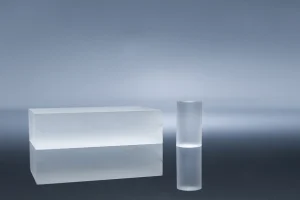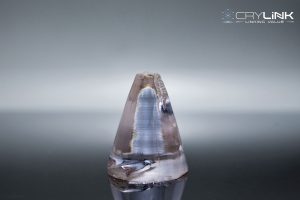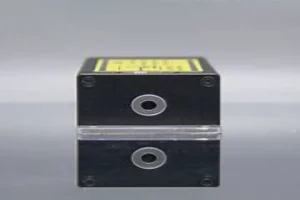Introduction to GGG Crystals
Gadolinium Gallium Garnet, commonly known as GGG, is a synthetic crystalline material with a wide range of applications. With the introduction of rare-earth doping, GGG crystals have seen even more advanced uses. This article dives deep into the world of these unique crystals, weighing their strengths and limitations.
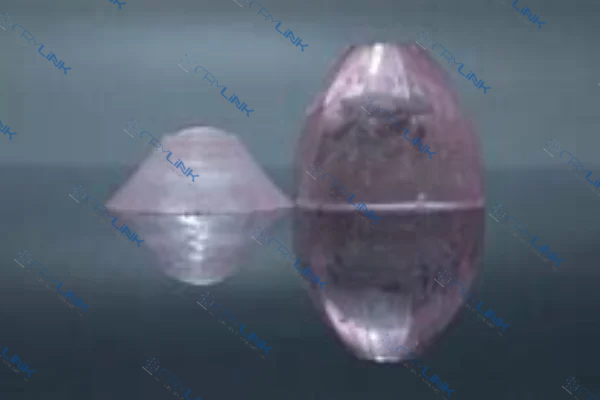
The Basics of GGG Crystals
Gadolinium Gallium Garnet, often referred to by its abbreviation GGG, is a fascinating compound that combines the elements of gadolinium, gallium, and oxygen to manifest a crystal with a range of sought-after properties. This synthesis results in a stable crystalline structure that can be distinguished by its exceptional thermal properties and its capacity to transmit light over a broad range of wavelengths. But, what truly piques the interest of researchers and industries alike is GGG’s prominent role in magnetic bubble memory.
Magnetic bubble memory is a non-volatile memory type, and it relies heavily on materials like GGG because of their unique magnetic properties. This memory form essentially leverages magnetic domains known as ‘bubbles’ to store binary data (0s and 1s). GGG’s ability to house these magnetic bubbles efficiently, along with its remarkable stability, has made it the substrate of choice in such applications. Furthermore, beyond just memory storage, GGG’s intrinsic properties make it an invaluable substrate for other garnet-based crystals in various optical and electronic ventures.
Delving into the realm of GGG crystals enhanced with rare-earth elements introduces us to an entirely new dimension of possibilities. Rare-earth doping is a scientific procedure where specific ions, typically from the lanthanide series of the periodic table, are incorporated into the GGG crystal matrix. This intentional adulteration transforms the crystal’s behavior, often magnifying certain properties or introducing entirely new ones.
For instance, consider elements like yttrium, neodymium, and erbium. When introduced into GGG, these elements can drastically boost the crystal’s optical capacities. Yttrium, for example, can enhance the overall structural durability of the crystal. Neodymium, on the other hand, is a heavyweight in the world of lasers, offering GGG the capacity to produce powerful laser emissions under the right conditions. Erbium has its spotlight in the telecommunications industry, especially in fiber optic amplifiers.
These rare-earth elements, when combined with the foundational strengths of GGG, forge a path for technological innovations that range from advanced optics to new-age memory storage solutions. The synergy between GGG and these rare-earth elements is a testament to the marvels of modern material science.
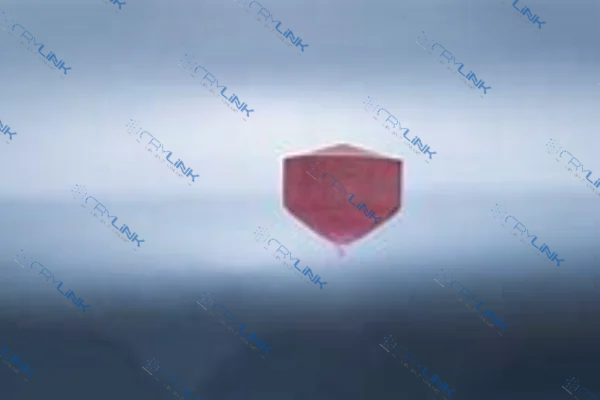
Advantages of GGG Crystals
Gadolinium Gallium Garnet (GGG) crystals have etched a significant place for themselves in the scientific and industrial worlds due to their multifaceted advantages. Among the most commendable attributes is their high thermal stability. In an age where materials are pushed to their limits, especially in electronics and high-tech industries, having a crystal that can resist degradation even when exposed to elevated temperatures is invaluable. This stability ensures longevity and reliable performance, reducing the need for frequent replacements or maintenance.
Apart from their resilience to heat, GGG crystals shine brightly in the world of optics. With their broad transmission range, they can facilitate the passage of light across a wide spectrum. This attribute isn’t just about breadth but also quality. The clarity and consistency of light transmission make GGG a favorite in applications where precision and clarity are paramount. Whether it’s in advanced imaging systems or intricate optical experiments, GGG crystals deliver results with minimal loss or distortion.
Beyond these specific properties, GGG crystals are incredibly versatile, often serving as the foundation for other materials. Their adaptability and compatibility make them an excellent substrate choice. When other materials or compounds are layered or grown on GGG, the resulting hybrid structures benefit from GGG’s inherent strengths. This substrate role is particularly evident in the production of other garnet-based crystals or when creating advanced semiconductor structures. This adaptability, combined with the aforementioned thermal stability and optical attributes, underlines why GGG crystals have become such integral components in modern technology and research.
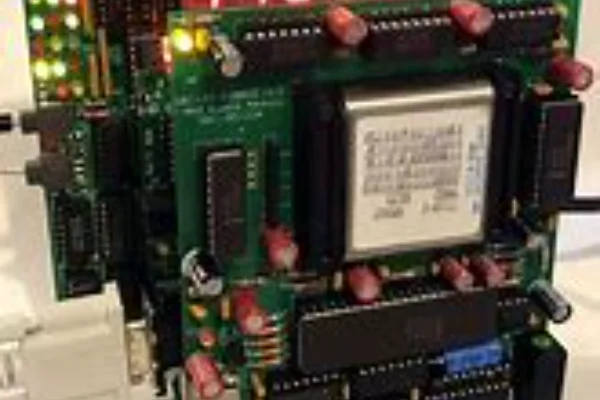
Strengths of Rare-Earth-Doped GGG Crystals
The world of material science was forever altered with the advent of rare-earth doping in Gadolinium Gallium Garnet (GGG) crystals. This sophisticated process has endowed these already impressive crystals with a set of enhanced capabilities that are transforming various sectors.
When we talk about enhanced optical properties due to rare-earth doping, we’re addressing a leap in the realm of optics. Rare-earth ions, when introduced into the GGG crystalline structure, amplify its light-interacting capacities. These doped crystals can manage light in ways that were previously deemed challenging or even impossible. For instance, they can facilitate light emissions at specific wavelengths or intensities, making them crucial in applications like advanced lasers or intricate light-based sensors.
Another groundbreaking advantage emerges in the domain of photonics. Photonics, the science of generating, detecting, and manipulating light, demands materials that can operate with utmost precision and reliability. Rare-earth-doped GGG crystals rise to this challenge, offering unmatched consistency in handling photons. This ensures that light-based technologies, whether they are communication systems or sensors, operate at peak efficiency and accuracy.
But the wonders of rare-earth doping aren’t confined to just optics and photonics. By introducing certain rare-earth ions into GGG, these crystals adopt magnetic personalities that weren’t inherent in their original form. This magnetic twist allows them to play pivotal roles in applications where magnetism and optics intersect, such as in magneto-optic switches or advanced memory storage devices.
In essence, while GGG crystals in their native form are already quite remarkable, the infusion of rare-earth elements catapults them to the forefront of cutting-edge technological innovations. Their versatility and heightened capabilities are setting new benchmarks in various scientific and industrial applications.
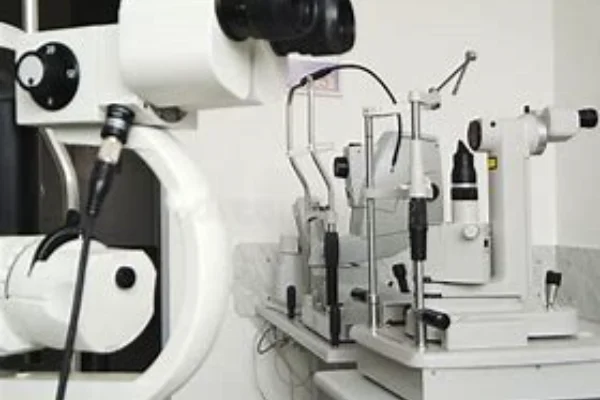
Limitations of GGG Crystals
While Gadolinium Gallium Garnet (GGG) crystals offer a myriad of advantages that make them invaluable in various applications, they are not without their limitations. One of the chief concerns when working with GGG crystals is their susceptibility to cracks. When subjected to certain mechanical stresses or rapid temperature changes, these crystals can exhibit fractures. This cracking not only compromises the structural integrity but also affects their optical and magnetic properties. In applications where precision and stability are paramount, such as high-tech optical systems, even minute cracks can lead to significant performance degradation.
Another factor that sometimes hampers the widespread adoption of GGG crystals is the cost associated with their production. Extracting high-purity GGG crystals requires sophisticated methods and equipment. The meticulous nature of this process, coupled with the need for high purity raw materials, can escalate production costs. When compared to some other crystalline substrates or materials, GGG may emerge as a pricier option. This cost implication becomes particularly significant for industries or research areas operating on tighter budgets or where large volumes of the crystal are required.
While these limitations don’t negate the plethora of strengths GGG crystals bring to the table, they do highlight the importance of considering all aspects, both strengths and constraints, when opting for their use in specific applications.

Challenges with Rare-Earth-Doped GGG Crystals
The fusion of rare-earth elements with Gadolinium Gallium Garnet (GGG) crystals, while promising in its potential, presents its own set of challenges. One of the prominent hurdles lies in the production process. To integrate rare-earth ions into GGG crystals effectively, a precise proportion needs to be maintained, and ensuring this uniformity is not straightforward. Any deviation in this precision can lead to variations in the desired properties of the resultant crystal, affecting its performance in targeted applications.
Moreover, the term ‘rare-earth’ isn’t just a moniker; it hints at the limited natural abundance of these elements. This scarcity poses a significant challenge, especially as demand grows in various industries. Ensuring a consistent supply chain becomes a concern, and with geopolitical tensions sometimes influencing the availability of these materials, industries may face disruptions.
Lastly, the environmental footprint associated with rare-earth elements cannot be overlooked. Extracting these elements necessitates mining activities, which, more often than not, lead to habitat destruction, water pollution, and the release of harmful toxins. Moreover, the refining process to procure usable rare-earth metals from mined ores involves chemical treatments that pose additional environmental threats. As global attention shifts toward sustainable practices, these environmental concerns associated with rare-earth-doped GGG crystals can be a significant deterrent for their broader acceptance and use.
Conclusion
GGG crystals, whether pure or doped with rare-earth ions, bring a plethora of advantages to the table, including excellent optical properties and thermal stability. However, like all materials, they have their limitations, such as susceptibility to cracks and production complexities. Understanding these trade-offs is vital in harnessing their full potential in various applications, from photonics to magnetic data storage.
Frequently Asked Questions (FAQs)
- Q1: What is the primary application of GGG crystals?
- A1: GGG crystals are predominantly used in magnetic bubble memory and as a substrate for other garnet-based crystals.
- Q2: How does rare-earth doping enhance the properties of GGG crystals?
- A2: Doping with rare-earth ions can boost the optical and magnetic properties of GGG crystals, making them more versatile.
- Q3: Are there environmental concerns associated with rare-earth-doped GGG crystals?
- A3: Yes, extracting and processing rare-earth elements can have significant environmental implications.
- Q4: Why are GGG crystals susceptible to cracking?
- A4: Due to their specific crystalline structure and certain conditions they might be exposed to, GGG crystals can develop cracks.
- Q5: Are rare-earth-doped GGG crystals more expensive than pure GGG crystals?
- A5: Generally, due to the complexities in production and limited natural abundance of rare-earth elements, doped GGG crystals tend to be pricier than their pure counterparts.


